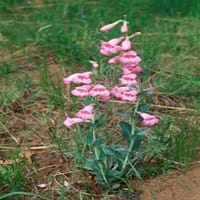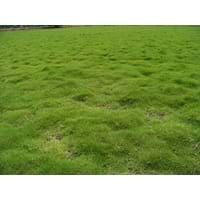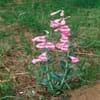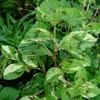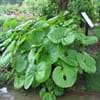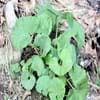Life Span
Perennial
Perennial
Type
Flowering Plants
Grass
Origin
North-Central United States, Central United States, Western United States, Texas
South-Eastern Asia, Asia
Types
Blue Toadflax, Old-Field Toadflax
Korean Lawngrass , Meyer Zoysiagrass , Manilagrass
Number of Varieties
Not Available
Habitat
Cultivated Beds
Lower slopes, Sandy stream banks
USDA Hardiness Zone
3-9
8-11
Sunset Zone
1a, 1b, 2a, 2b, 3a, 3b, 10
H1, H2, 8, 9, 12, 13, 14, 15, 16, 17, 18, 19, 20, 21, 22, 23, 24
Habit
Upright/Erect
Clump-Forming
Minimum Width
Not Available
Flower Color
Pink, Light Blue, Lavender
Green, Light Green
Flower Color Modifier
Bicolor
Bicolor
Fruit Color
Not Available
Non Fruiting Plant
Leaf Color in Spring
Light Green, Blue Green, Gray Green
Light Green, Dark Green
Leaf Color in Summer
Blue Green, Gray Green
Light Green
Leaf Color in Fall
Blue Green, Gray Green
Green, Yellow green, Gold
Leaf Color in Winter
Not Available
Gold, Tan
Leaf Shape
Oval to egg shaped
Grass like
Plant Season
Spring, Summer
Spring, Summer, Fall, Winter
Sunlight
Full Sun, Partial Sun
Full Sun, Partial Sun
Growth Rate
Fast
Very Slow
Type of Soil
Clay, Loam
Loam, Sand
The pH of Soil
Neutral, Alkaline
Acidic, Neutral, Alkaline
Soil Drainage
Well drained
Average
Bloom Time
Late Spring, Early Summer, Summer
Not Available
Tolerances
Drought
Drought, Salt, Soil Compaction
Where to Plant?
Ground
Ground
How to Plant?
Cuttings, Divison, Seedlings
Sod, Sprigging or Stolonizing
Plant Maintenance
Medium
Medium
Watering Requirements
Average Water Needs, Do Not over Water
weekly regular
In Summer
Lots of watering
Lots of watering
In Spring
Moderate
Moderate
In Winter
Average Water
Average Water
Soil pH
Neutral, Alkaline
Acidic, Neutral, Alkaline
Soil Type
Clay, Loam
Loam, Sand
Soil Drainage Capacity
Well drained
Average
Sun Exposure
Full Sun, Partial Sun
Full Sun, Partial Sun
Pruning
Remove damaged leaves, Remove dead branches, Remove dead leaves
Remove damaged leaves, Remove dead branches, Remove dead leaves
Fertilizers
use all-purpose fertilizers
All-Purpose Liquid Fertilizer
Pests and Diseases
Foliar disease, Root rot, Spider mites
Army-worms, sod webworms
Plant Tolerance
Drought
Drought
Flowers
Showy
Insignificant
Flower Petal Number
Single
Single
Foliage Texture
Medium
Fine
Foliage Sheen
Matte
Matte
Attracts
Bumblebees
Crickets
Allergy
Depression, High blood cholestrol, Pain
Not Defined
Aesthetic Uses
Showy Purposes
Beautification, Cottage Garden, Farmland, Ground Cover, Landscape Designing
Beauty Benefits
Not Available
Not Available
Environmental Uses
Air purification
Provides ground cover, soil erosion prevension on hill slopes
Medicinal Uses
Analgesic, Febrifuge, Stomachic
Unknown
Part of Plant Used
Leaves, Root
Whole plant
Other Uses
Not Available
Used as a golf course turf
Used As Indoor Plant
No
Insignificant
Used As Outdoor Plant
Yes
Yes
Garden Design
Rock Garden / Wall, Wildflower
Container, Edging, Groundcover, Lawns and Turf, Mixed Border, Rock Garden / Wall, Tropical
Botanical Name
PENSTEMON grandiflorus
ZOYSIA tenuifolia
Common Name
Large Beardtongue, Shell-leaf Penstemon, Wild Snapdragon
Korean Velvet Grass
In Hindi
Wild Snapdragon
कोरियाई मखमल घास
In German
Wilde Snapdragon
Korean Samt Gras
In French
Snapdragon sauvage
herbe de velours coréenne
In Spanish
Salvaje Snapdragon
hierba de terciopelo de Corea
In Greek
άγρια Snapdragon
hierba de terciopelo de Corea
In Portuguese
Selvagem Snapdragon
grama de veludo coreano
In Polish
Dziki Snapdragon
Not Available
In Latin
Phlox Ferae
Carl herba
Phylum
Magnoliophyta
Angiosperms
Class
Magnoliopsida
Monocotyledonae
Order
Scrophulariales
Cyperales
Family
Scrophulariaceae
Poaceae
Genus
Penstemon
Zoysia Willd
Clade
Angiosperms, Asterids, Eudicots
Commelinids
Tribe
Not Available
Cynodonteae
Subfamily
Scrophularioideae
Chloridoideae
Number of Species
Not Available
Season and Care of Wild Snapdragon and Korean Velvet Grass
Season and care of Wild Snapdragon and Korean Velvet Grass is important to know. While considering everything about Wild Snapdragon and Korean Velvet Grass Care, growing season is an essential factor. Wild Snapdragon season is Spring and Summer and Korean Velvet Grass season is Spring and Summer. The type of soil for Wild Snapdragon is Clay, Loam and for Korean Velvet Grass is Loam, Sand while the PH of soil for Wild Snapdragon is Neutral, Alkaline and for Korean Velvet Grass is Acidic, Neutral, Alkaline.
Wild Snapdragon and Korean Velvet Grass Physical Information
Wild Snapdragon and Korean Velvet Grass physical information is very important for comparison. Wild Snapdragon height is 61.00 cm and width 25.40 cm whereas Korean Velvet Grass height is 2.50 cm and width Not Available. The color specification of Wild Snapdragon and Korean Velvet Grass are as follows:
Wild Snapdragon flower color: Pink, Light Blue and Lavender
Wild Snapdragon leaf color: Light Green, Blue Green and Gray Green
Korean Velvet Grass flower color: Green, Light Green
- Korean Velvet Grass leaf color: Light Green and Dark Green
Care of Wild Snapdragon and Korean Velvet Grass
Care of Wild Snapdragon and Korean Velvet Grass include pruning, fertilizers, watering etc. Wild Snapdragon pruning is done Remove damaged leaves, Remove dead branches and Remove dead leaves and Korean Velvet Grass pruning is done Remove damaged leaves, Remove dead branches and Remove dead leaves. In summer Wild Snapdragon needs Lots of watering and in winter, it needs Average Water. Whereas, in summer Korean Velvet Grass needs Lots of watering and in winter, it needs Average Water.
